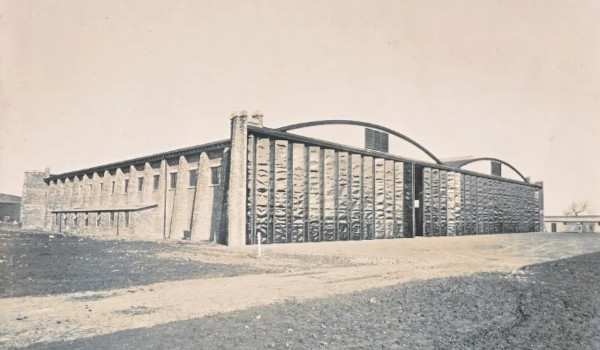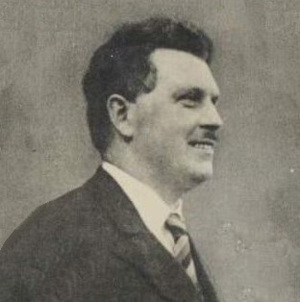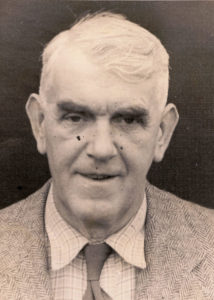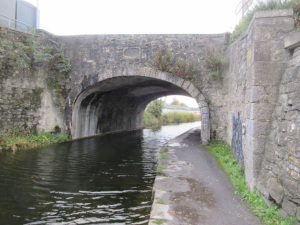Civil War in North Kildare
Sept. – Dec. 1922
Part I. The Leixlip Anti-Treaty Column
Published in the Liffey Champion, 19th November 2022
One hundred years ago the country was immersed in Civil War, a conflict that divided families and communities alike. The conventional phase of the war had ended by August 1922, with the capture of the so-called Munster Republic, but the second phase consisting of guerrilla activity continued with various degrees of intensity. In north Kildare the conflict had seemingly fizzled out as a contest by the early Autumn of 1922.
However, in late September a significant upsurge in Civil War activity resumed in north Kildare and gained strength with the passing of each week. This was most unusual particularly in a region within 10 miles of the centre of Dublin.
This resurgent militancy was due to the establishment of the Leixlip anti-Treaty IRA Column led by Paddy Mullaney. The column was an Active Service Unit effectively engaged in guerrilla tactics. While operating locally they were receiving instructions from Mick Price the anti-Treaty IRA regional commander for the Easter Division.
Paddy Mullaney, a Mayo born primary school teacher in Leixlip had come to prominence in the latter stages of the War of Independence as a successful IRA Battalion commander in north Kildare. Taking the anti-Treaty side in the IRA split he was arrested on the second day of the Civil War in late June but escaped from the Curragh Camp prison in August.
A number of factors led to the formation of the Leixlip Column. Mick O’Neill, Mullaney’s right hand man, had escaped from Dundalk in mid-August and Thomas Gallivan, the leader of the anti-Treaty side in north Kildare, had moved to a new position in Longford. By September the anti-Treaty leadership had reappointed Mullaney in charge of his old battalion area. Mullaney’s first job was to re-build an anti-Treaty IRA Column and mould it into an effective mobile fighting unit. Experienced guerrilla fighters such as Jack O’Connor, Company Captain of the anti-Treaty side in Celbridge and Tim Tyrrell head of the anti-Treaty side in Maynooth as well as Mick O’Neill, now joined with Mullaney in the new column. It was to become the most successful fighting force in Kildare since the rebellion of 1798.
The column was based in Leixlip and operated mainly in the triangular area of Leixlip, Celbridge and Maynooth. There was no National army presence in the area although two army garrisons were situated close by at Lucan and Baldonnell. Commandant Mick Flynn was in charge in Lucan and together with a number of other members in the garrison had served under Mullaney during the War of Independence.
Attempted Capture of Baldonnell Aerodrome
The initial resurgence of activity by the column included carrying out successful low-key military encounters such as communication disruptions as directed by the anti-Treaty leadership.
Not content with small jobs, Mullaney set his sights on more ambitious targets. As well as being an effective guerrilla leader he was also a strategist and proposed an operation designed to strike at the heart of the newly established Irish Government. The plan he devised aimed to capture Baldonnell (now Casement) Aerodrome, the centre of the new National army air force, then commandeer an airplane which would be used by activists to bomb Government Buildings in Dublin. The idea may have come from the effective use of airplanes by the RAF in the closing months of the War of Independence. In July 1921, Mullaney personally witnessed the successful use of spotter planes during the abortive IRA ambush at Stacumny close to Celbridge.
Assistance from the inside was also forthcoming as Mullaney had made contacts with up to thirty discontented soldiers based in Baldonnell Aerodrome, who promised to desert and join the anti-Treaty side. The proposal to capture the aerodrome which had a garrison of 113 men was very ambitious and a two-part plan was devised. First, a surprise attack would be launched on the aerodrome and with the collusion of up to a quarter of the garrison, the capture of the complex and the armament would be achieved. Mullaney’s second in command, Mick O’Neill had experience of two assaults on Dundalk jail when interned in the prison in July and August. On the second occasion an anti-Treaty force led by Frank Aiken carried out one of the most sensational operations during the Civil War when they captured the prison while the garrison and warders slept. Mullaney had hoped to carry out a similar operation in Baldonnell.

Baldonnell Aerodrome. Courtesy of Local Studies Resources, South Dublin County Council.
The second part of Mullaney’s plan would be even more spectacular as it envisaged the use of a captured airplane piloted by a friendly pilot to bomb Government Buildings. An escape plan for the participants following the operation was also planned with the airplane directed to land on Merrion Strand.
The plan was taken on board by Mullaney’s superiors and there were at least two mobilisations to carry out the planned attack. On the first occasion John Dowling a senior anti-Treaty activist from Dublin was initially appointed to take charge, but during the preparations Tom Derrig a senior member of the anti-Treaty leadership was put in command. However, Derrig, postponed the operation for a week. The second attempt which took place, on the 9th of October was spearheaded by Mullaney, who obtained assistance from the Kildare anti-Treaty 7th Brigade. Senior Kildare anti-Treaty commandants, Thomas Harris, Willie Byrne and James Dunne with about fifty men reported to Celbridge awaiting the final order to advance to Baldonnell. Mullaney had mustered thirty men which brought the total strength of the Kildaremen to eighty. The anti-Treaty side believed that Baldonnell Camp was manned by about three hundred men including thirty officers. However, this figure seems to have been an overestimation. Thirty soldiers in the camp co-operating with Mullaney were in the guard room ready to act on a prearranged signal to take over the camp.
Todd Andrews of the anti-Treaty GHQ staff was also involved in the planning stage of the operation and earmarked with John Dowling to go up in the captured airplane to discharge bombs on Government buildings. With all the participants in place, Tom Derrig and the pilot, a veteran of military flights during WWI assembled close to Baldonnell. Andrews joined a unit of the Dublin Brigade under John Dowling and proceeded along the canal bank from Clondalkin. The Dublin unit were assisted by Mary Woods a Cumman na mBan activist engaged in outpost duty while Fanny O’Connor of Celbridge Cumann na mBan whose brother Jack was a member of the Leixlip Column, worked tirelessly as Mullaney’s liaison officer with Dowling throughout the planning stages.

Tom Derrig.
However, when the different groups linked up outside Baldonnell, Dowling received a message from Derrig cancelling the plans. The reason given was that insufficient numbers from Dublin had assembled. According to Mary Woods, ‘the number needed for the job was 90 and only 59 turned up’.
The Baldonnell operation ended in failure due a lack of support from the Dublin men. Despite this Mullaney who still held out faint hopes that other attempts would be possible continued to work on the plans.
With a substantial anti-Treaty force congregated close to the Baldonnell area where there was a strong National army presence, the safe return of the activists to their local areas would be risky. Mullaney, always the strategist, decided to launch an attack on Lucan Barracks as a diversion. An army report into the incident recorded that at 2:45 am on the 10th of October, Lucan barracks was attacked for one hour. The diversion worked as all anti-Treaty activists returned safely to their local areas.
Communication Disruption
Following the setback at Baldonnell, Mullaney concentrated on destroying communication infrastructure and was impressively successful during the remainder of October and November. Various accounts in the Military Archives lists the numerous activities by the column within the triangular area of north-east Kildare.
On the 14th of October, they successfully disrupted communication from Dublin to the west. The railway line at Maynooth was blown up and telegraph wires severed. On the same day an unsuccessful attempt was made to destroy Louisa Bridge near Leixlip. While this encounter was taking place, twenty men from the column, who were on lookout duty ambushed a military car carrying Commandant Buggle, a National Army officer, close to the bridge. He was wounded in the attack and disarmed.
Activity by the column continued the following day when the railway bridge near Straffan was blown up and telegraph wires and poles were cut. This disrupted communications to the south.
Three days later one section of the column dismantled the telephone exchange at Leixlip while another section positioned themselves on the Maynooth side of the village to ambush any military cars that approached.
During a four-day period, on the following week the column completely severed communication between the west and Dublin. The week began with the demolition of telegraph communications at Lucan, Leixlip and Celbridge. On the 24th of October, one of the biggest and most successful operations by the column was undertaken with the destruction of the Liffey bridge at Celbridge. According to the Kildare Observer twelve men were engaged in the operation with the bridge blown up on the morning of the 25th of October. The people in the town were informed beforehand and advised not to be afraid. The column confidently exercised a level of authority and even disarmed three National army soldiers in the town.
The following day, the 26th of October, it was the turn of Louisa Bridge in Leixlip which was severely damaged by an explosion. This bridge was one of the most bombed bridges in the country during the 1921–22 period. Evidence of damage to canal bridges from this period is clearly noticeable today particularly on barge trips along the Royal Canal where repair work on the underneath of many bridges including Louisa Bridge is clearly visible.
On the 30th of October a National army party searched some premises in Celbridge and close to the house of Leonard Cardwell discovered one of Mullaney’s explosives dumps. Cardwell and his son Thomas, who was a National army soldier home on leave, were arrested.
A temporary National army post was established in a building in Celbridge Workhouse at this time and on the night of the 1st of November, the entire Leixlip Column, now said to be about thirty strong, engaged in a sniping operation on the army post. The attack lasted about half an hour. The army post was temporary and soon vacated. However, in the early morning of the 6th of November the column returned to Celbridge Workhouse and burned the vacant fever hospital, evidently to prevent its use as a National army barracks.
As November progressed the column were to become more adventurous and daring. On the 9th of November, they took up positions at both ends of Leixlip apparently planning to ambush a National army party, before withdrawing after two and a half hours. As they were leaving, they returned mail bags to Leixlip post office that had been seized from the postman the previous day. The mails were marked censored by the IRA.
In late November the Leixlip Column seemed to be invincible and immune from arrest but over-confidence was to be their undoing.
Part II, The Battle of Pike Bridge.
Sources
- Kildare Observer, 28 Oct. 1922
- Official figures of Baldonnell garrison, 12/13 Nov. 1922, census.militaryarchives.ie/
- Mary Flannery Woods (BMH WS 624, pp 3–4)
- James Dunne (BMH, WS 1571, pp 17–18).
- Post-truce claims, Minister for Local Government, Aug. 1923 (NAI, FIN/COMP/2/9/314)
- Eoin Neeson, Civil War in Ireland (Dublin, 1989), pp 188–90
- C. S. Andrews, Dublin made me: an autobiography (Cork, 1979), pp 237–9
- Michael Hopkinson, Green against Green (Dublin, 2002), p. 146
- James Durney, Civil War in Kildare (Cork, 2011), pp 101–3
- Seamus Cullen, Kildare: The Irish Revolution (Dublin, 2020), pp 124–5
- Seamus A. Cummins, ‘Mullaneys Men’ The rise and fall of the anti-Treaty forces in North Kildare, Grangewilliam 1922 (Naas, 2022), pp 17–25


